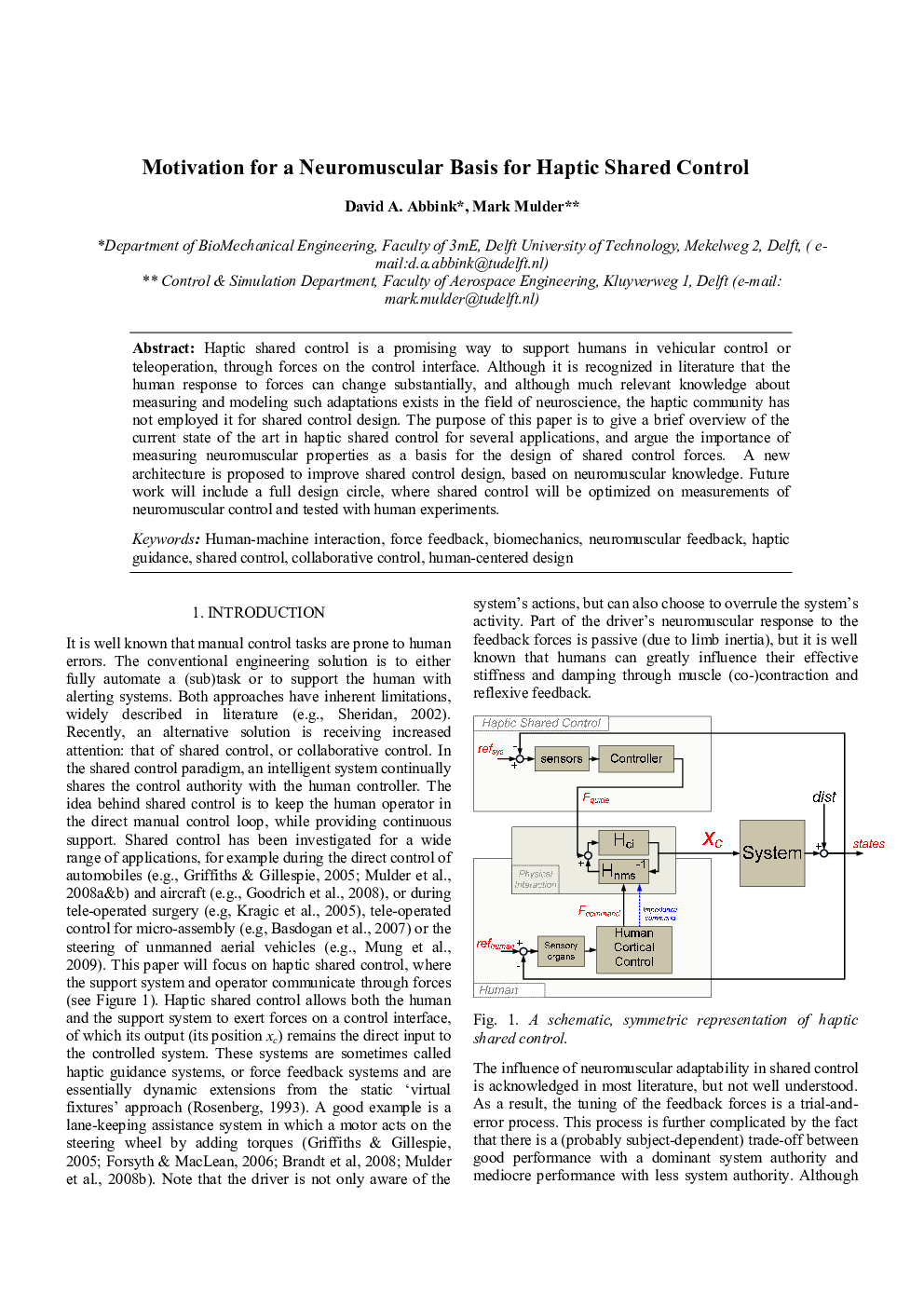| کد مقاله | کد نشریه | سال انتشار | مقاله انگلیسی | نسخه تمام متن |
|---|---|---|---|---|
| 710008 | 892099 | 2010 | 5 صفحه PDF | دانلود رایگان |

Haptic shared control is a promising way to support humans in vehicular control or teleoperation, through forces on the control interface. Although it is recognized in literature that the human response to forces can change substantially, and although much relevant knowledge about measuring and modeling such adaptations exists in the field of neuroscience, the haptic community has not employed it for shared control design. The purpose of this paper is to give a brief overview of the current state of the art in haptic shared control for several applications, and argue the importance of measuring neuromuscular properties as a basis for the design of shared control forces. A new architecture is proposed to improve shared control design, based on neuromuscular knowledge. Future work will include a full design circle, where shared control will be optimized on measurements of neuromuscular control and tested with human experiments.
Journal: IFAC Proceedings Volumes - Volume 43, Issue 13, 2010, Pages 299-303